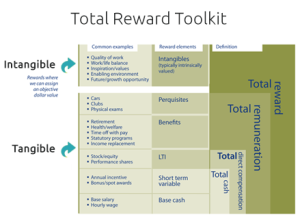Every sales cycle has some very important steps. However, small they seem their importance gets highlighted only when business deals do not take off as planned or the response of the prospect is not forthcoming. Before making any sales call, it is imperative to do some research about the people and the organization that one is trying to reach.
One of the first things that most people need to understand when they are doing research and they are going to call on sectors and clients is really to understand who their target customer is. Targeting the RIGHT person is crucial. Secondly, it’s important to make sure of the fact that what we are trying to sell is in line with what one is looking to buy. Simply pushing a product will never serve a purpose. This scenario is the same as your pushing a customer to buy a baby product when she is actually looking for a cosmetic. Hence, understanding the need of the client is essential. Once this is clear and reaches a meeting level, we need to keep ourselves updated about the structure of the organization, the industry, the news and the details of the person we are interacting with. It is best to go to the meeting as prepared as we possibly can. With information readily available on our fingertips through computers, phones, tablets and even by cursory googling; it is best advised to keep ourselves equipped with all the right information before the meeting.
Experts opine that LinkedIn is by far the best platform for any prospect research. LinkedIn helps to check the following areas of the prospect’s profile.
Experience at the current job, former experiences, shared connections, groups and recent activities. While the current job lists out duties or projects that the prospect is involved with, former experiences show their career history. If there is a common connection with the prospect, it adds to our advantage and could act as a referral opportunity. Groups and group chats give a fair idea about what is being discussed about. Recent activities also help in looking into what the prospect has recently purchased, where and shared.
Twitter account goes a long way in finding out an individual’s interests and posts. At the same time, the company’s Twitter account helps in discovering what the company has been promoting to its customers and how. This helps us to understand how to present ourselves to the prospect.
It’s important to keep ourselves abreast about the prospect company’s recent press and media releases that give information about recent acquisitions, change in leaderships, product releases, financial statements, events and more. Checking out the company’s recent financial reports and problems are also a good step in this regard. In addition, the company’s blog or a prospect’s blog must be read and commented on during the call or meeting.
There might be instances where your interaction with a prospect is at first, but the prospect might have checked you out already. Hence it becomes necessary to search for the prospect in the marketing automation system for any interaction history. This could largely influence your approach in the buying –selling process. At the same time it is necessary to find out if another sales team member has approached the prospect in the recent past. And if so, what the outcome was. This helps to change or modify your approach to suit your needs.
In the todays’ competitive world, a competitor’s recent announcement may impact your offering. It may act to your advantage. At the same time, your prospect may feel your offering may be an unnecessary expense. The key factor in such a situation is shrewdness in assessing the situation and turning it to your advantage.
The relation between a sales person and a prospect is a delicate one. Often the first few questions asked determines whether the relation continues further. The sales person must evaluate the prospect at different levels. The organization or the company need, whether there is a specific need or a challenge that should be overcome and whether it’s feasible to implement a particular service or product. Time is the most precious asset for any sales person and it’s it is better not to waste it on ‘Closing’ every deal but clinching a handful of the best deals. Ultimately, it makes sense to conclude that every sales person dreams of achieving targets. But this process of achieving targets depends on his foresight, ability to judge a prospect’s need, convincing abilities, negotiation skills and lastly a positive attitude.
 Employee reward system should be based on the values, vision and goals of the organisation, and modifications must be done to make the entire process special and rejuvenating for the employees. A well-balanced reward system must recognize the performance and behaviour of the employees. As performance is directly linked with the final outcomes, it is easier to address. Appreciation and Recognition are the most underrated rewards, and are ignored by most businesses. These are high-return and low-cash ingredients, and must be an integral part of a well-balanced reward system. The simple act of expressing gratitude and acknowledge the performance can have positive impact on the employees, increasing their morale, and improving their performance.
Employee reward system should be based on the values, vision and goals of the organisation, and modifications must be done to make the entire process special and rejuvenating for the employees. A well-balanced reward system must recognize the performance and behaviour of the employees. As performance is directly linked with the final outcomes, it is easier to address. Appreciation and Recognition are the most underrated rewards, and are ignored by most businesses. These are high-return and low-cash ingredients, and must be an integral part of a well-balanced reward system. The simple act of expressing gratitude and acknowledge the performance can have positive impact on the employees, increasing their morale, and improving their performance.




